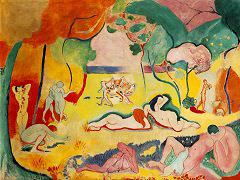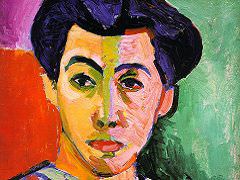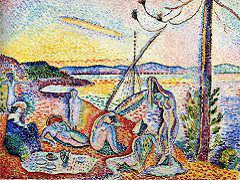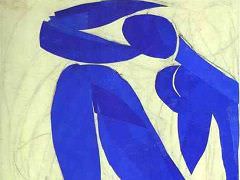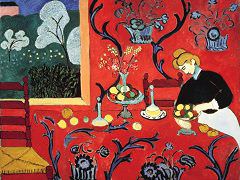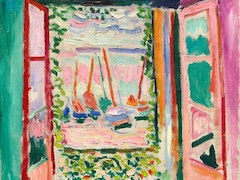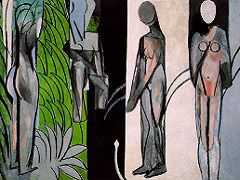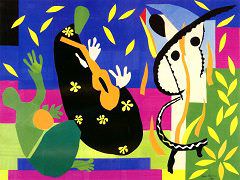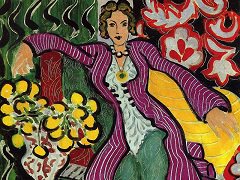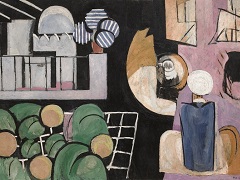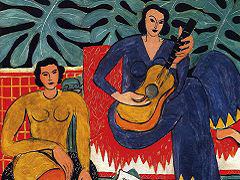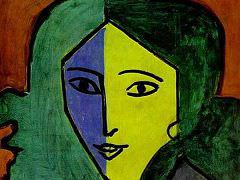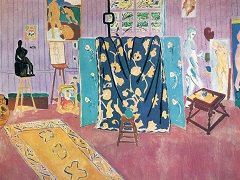The Attic Studio, 1903 by Henri Matisse
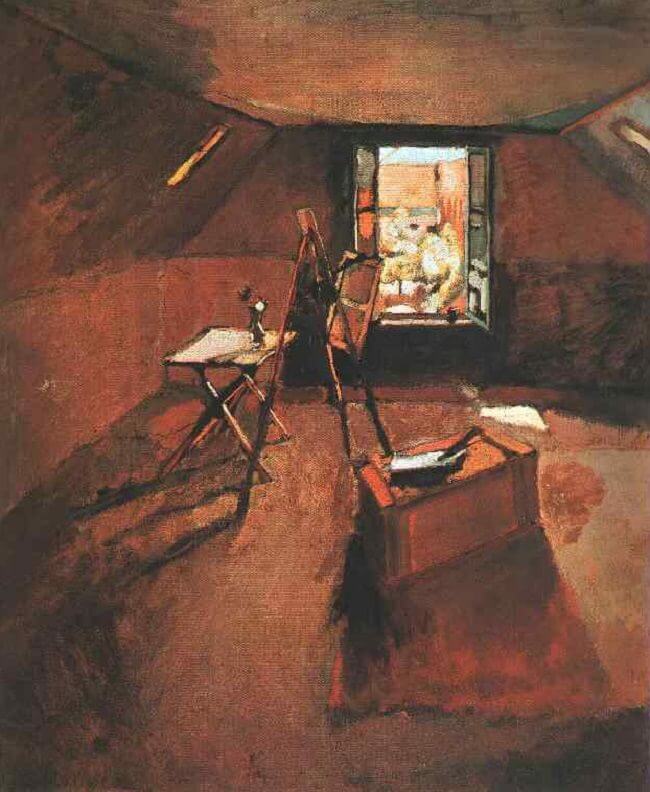
This unusual, somewhat crudely executed interior was painted in the artist's makeshift studio atop his father's house at Bohain-en-Vermandois during a particularly trying period in his career. Economic distress had forced him to abandon Paris for a time. In its somber tones, accentuated rather than relieved by the small, luminous landscape glimpsed through the distant window, it, like other pictures of this epoch, looks back beyond the intense, saturated colors of his work in the late nineties to the earthen palette of his first efforts. On the other hand, its frontal composition, with vast expanses of vacant surface, abandons the diagonal or oblique axes of many earlier paintings, notably La Desserte (1897; fig. 8), as well as the self-portrait of 1900 (frontispiece) and the majority of his figure studies of that epoch.
The flattening effect achieved by this spatial arrangement, viewed from a startlingly high vantage point, thus looks forward to the great studio series of 1911. Moreover, the theme of the open window, heretofore an accessory in his interiors if it appeared at all, is centralized and exploited for the first time in his work. It was a crucial motif that would occupy the artist until his last paintings on canvas, notably Interior with Egyptian Curtain. In the light of his later works, it would seem that the analogy between the picture frame and the frame of the window, each offering a controlled, measured fragment of the artist's world of appearances, finds its beginnings in this modest, unassuming canvas.
The theme of the open window had been thoroughly explored by German Romantic artisfls like Kaspar David Friedrich in the early nineteenth century, but its appearance in French art of that century was sporadic and incidental. Almost single-handed, Matisse seems to have reinvented the significance if not the actual use of the open, uncurtained window and prepared the way for the exploitation of this theme by his contemporaries and juniors: Bonnard, Gris, Picasso, Delaunay, and even (ironically) Duchamp and Magritte.

